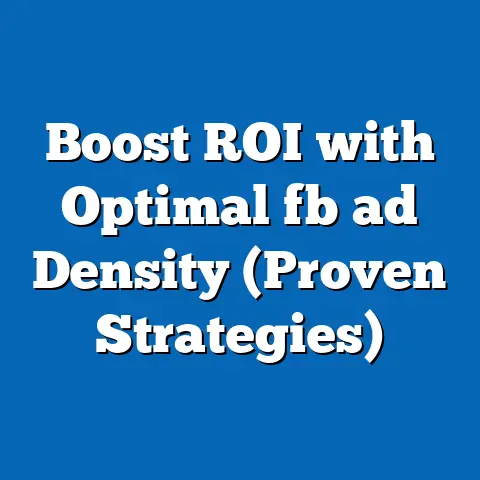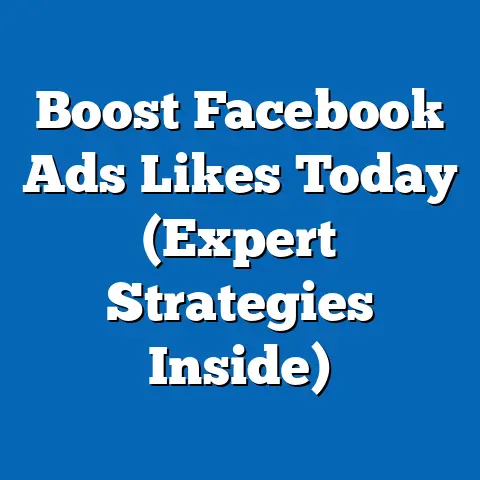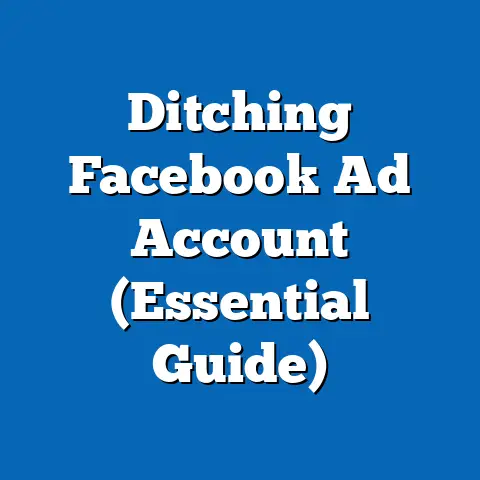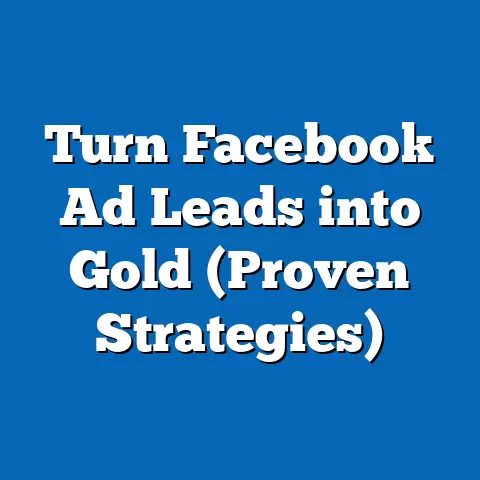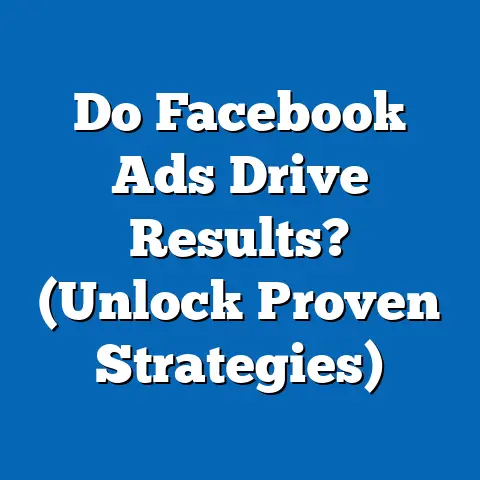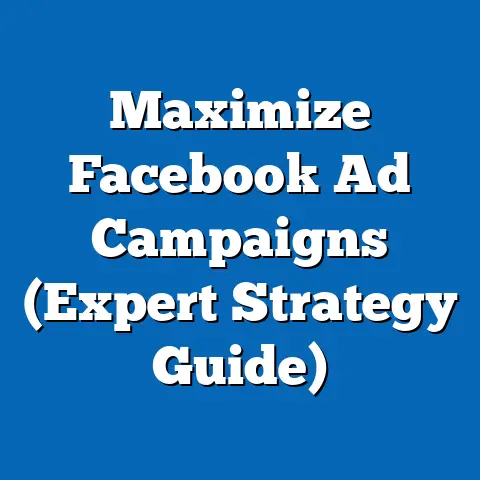Master Center Align in Facebook Ads (Game-Changer Techniques)
Understanding Center Alignment
So, what exactly is center alignment in the context of Facebook ads? Simply put, it’s the practice of positioning text and visual elements in the middle of your ad creative. This applies to both horizontal and vertical centering. Think of it as creating a balanced and symmetrical composition that draws the viewer’s eye to the focal point.
In design principles, center alignment is often associated with formality, stability, and a sense of order. It’s a classic technique that can create a clean and uncluttered look, especially when used effectively with whitespace. However, it’s not just about aesthetics; center alignment can also influence how users process information.
When compared to left or right-aligned ads, center-aligned ads often feel more balanced and less imposing. Left alignment, while common for body text, can sometimes feel dense in an ad context. Right alignment, less common in general, can feel jarring to viewers accustomed to reading from left to right. Center alignment, on the other hand, offers a middle ground that can be both visually appealing and easy to read.
For example, imagine a Facebook ad for a new line of organic skincare products. A center-aligned layout with a single product image in the middle, a short, centered headline above, and a centered call-to-action button below, can create a sense of elegance and simplicity. This contrasts with a cluttered, left-aligned ad that might feel overwhelming and less trustworthy.
Key Takeaway: Center alignment is a design technique that focuses on creating visual balance and order in your Facebook ads, potentially leading to improved user perception and engagement.
The Psychology Behind Center Alignment
Why does center alignment work? The answer lies in the fascinating realm of psychology. Our brains are wired to appreciate symmetry and balance. From an evolutionary standpoint, symmetry often signifies health and stability, which subconsciously translates to trust and positive associations.
When we look at a center-aligned design, our brains find it easier to process the information because it’s inherently balanced. This reduces cognitive load, making the ad more appealing and less likely to be dismissed. Studies in visual perception have shown that symmetrical images are often perceived as more attractive and harmonious.
Furthermore, center alignment can subtly influence emotions. A well-balanced ad can evoke feelings of calmness, stability, and trustworthiness, which can be crucial in building brand credibility. In contrast, a poorly aligned ad can create a sense of unease or confusion, leading to negative associations.
Think about it: when you see a perfectly centered logo on a product, it subconsciously conveys a sense of quality and attention to detail. The same principle applies to Facebook ads. By using center alignment effectively, you can subtly communicate your brand’s values and create a more positive user experience.
Key Takeaway: Center alignment leverages the psychological principles of symmetry and balance to create visually appealing and emotionally resonant Facebook ads, ultimately increasing user engagement.
Crafting Center-Aligned Facebook Ads
Now that we understand the theory behind center alignment, let’s dive into the practical steps of crafting compelling center-aligned Facebook ads. Here’s a step-by-step guide to help you get started:
-
Choosing the Right Images and Graphics: Select high-quality visuals that are naturally balanced and symmetrical. Images with a clear focal point in the center work best. Avoid images that are too busy or have distracting elements on the sides. For example, a product shot with a clean background is ideal for center alignment. I often use stock photo sites like Unsplash or Pexels to find high-quality, royalty-free images that lend themselves well to centered layouts.
-
Font Selection and Size: Choose fonts that are easy to read and complement your brand’s aesthetic. Use a consistent font size for headlines and body text. Experiment with different font weights (bold, semi-bold, regular) to emphasize key messages. Keep in mind that the font size should be large enough to be easily legible on mobile devices, where most Facebook users browse. I’ve found that using Google Fonts allows for a wide variety of typography options, and they integrate seamlessly with most design tools.
-
Whitespace and Negative Space: Master the art of whitespace. Use ample space around your text and visuals to create a clean and uncluttered look. Whitespace helps to draw attention to the key elements of your ad and makes it easier for users to process the information. Don’t be afraid to leave empty space; it’s just as important as the content itself. I often use whitespace to create a sense of luxury and sophistication, especially for high-end products or services.
-
Balancing Text and Visuals: Strive for a harmonious balance between text and visuals. Avoid overcrowding your ad with too much text. Keep your headlines concise and your body text brief. Use bullet points or short paragraphs to break up the text and make it easier to scan. Ensure that your text doesn’t obscure the visual elements. The goal is to create a seamless integration between text and visuals that tells a compelling story.
-
Tools and Resources: Utilize design tools like Canva, Adobe Spark, or Figma to create your center-aligned Facebook ads. These tools offer pre-designed templates and easy-to-use features that can help you create professional-looking ads without needing advanced design skills. Facebook’s own Ad Manager also provides basic design tools that you can use to create and edit your ads. I personally love using Canva for quick and easy ad creation, especially when I need to whip something up on the fly.
Choosing the Right Images and Graphics: Select high-quality visuals that are naturally balanced and symmetrical. Images with a clear focal point in the center work best. Avoid images that are too busy or have distracting elements on the sides. For example, a product shot with a clean background is ideal for center alignment. I often use stock photo sites like Unsplash or Pexels to find high-quality, royalty-free images that lend themselves well to centered layouts.
Font Selection and Size: Choose fonts that are easy to read and complement your brand’s aesthetic. Use a consistent font size for headlines and body text. Experiment with different font weights (bold, semi-bold, regular) to emphasize key messages. Keep in mind that the font size should be large enough to be easily legible on mobile devices, where most Facebook users browse. I’ve found that using Google Fonts allows for a wide variety of typography options, and they integrate seamlessly with most design tools.
Whitespace and Negative Space: Master the art of whitespace. Use ample space around your text and visuals to create a clean and uncluttered look. Whitespace helps to draw attention to the key elements of your ad and makes it easier for users to process the information. Don’t be afraid to leave empty space; it’s just as important as the content itself. I often use whitespace to create a sense of luxury and sophistication, especially for high-end products or services.
Balancing Text and Visuals: Strive for a harmonious balance between text and visuals. Avoid overcrowding your ad with too much text. Keep your headlines concise and your body text brief. Use bullet points or short paragraphs to break up the text and make it easier to scan. Ensure that your text doesn’t obscure the visual elements. The goal is to create a seamless integration between text and visuals that tells a compelling story.
Tools and Resources: Utilize design tools like Canva, Adobe Spark, or Figma to create your center-aligned Facebook ads. These tools offer pre-designed templates and easy-to-use features that can help you create professional-looking ads without needing advanced design skills. Facebook’s own Ad Manager also provides basic design tools that you can use to create and edit your ads. I personally love using Canva for quick and easy ad creation, especially when I need to whip something up on the fly.
Here’s an example of how to apply these principles: Let’s say you’re advertising a new online course on photography. You could use a stunning, center-aligned image of a landscape, with the course title centered above the image in a clear, bold font. Below the image, you could have a short, centered description of the course and a call-to-action button that says “Enroll Now.” The key is to create a visually appealing and easy-to-understand layout that draws the user’s eye to the most important information.
Key Takeaway: Crafting effective center-aligned Facebook ads involves careful consideration of visuals, typography, whitespace, and the overall balance of the design. Utilizing the right tools and resources can significantly simplify the process.
Analyzing Case Studies
To further illustrate the power of center alignment, let’s examine a few real-world case studies of successful Facebook ads that utilize this technique:
-
Case Study 1: Luxury Watch Brand
A luxury watch brand ran a Facebook ad campaign featuring a close-up, center-aligned image of their latest timepiece. The ad copy was minimal, with a simple, centered headline that read “Timeless Elegance.” The call-to-action button, also centered, directed users to the brand’s website.
-
Results: The ad achieved a click-through rate (CTR) that was 30% higher than the brand’s average CTR. The conversion rate (the percentage of users who purchased a watch after clicking the ad) was also significantly higher than previous campaigns.
-
Analysis: The success of this ad can be attributed to the use of a high-quality, center-aligned image that showcased the watch’s intricate details. The minimal, centered copy created a sense of sophistication and exclusivity, appealing to the brand’s target audience.
- Case Study 2: Online Fitness Program
An online fitness program ran a Facebook ad campaign featuring a before-and-after image of a client who had successfully completed the program. The images were centered side-by-side, with a short, centered headline that read “Transform Your Body.” The call-to-action button, also centered, directed users to a landing page where they could sign up for a free trial.
-
Results: The ad generated a high volume of leads and a significant increase in sign-ups for the program. The ad’s cost per acquisition (CPA) was lower than the program’s average CPA.
-
Analysis: The use of a compelling before-and-after image, centered for maximum impact, was a key factor in the ad’s success. The centered headline clearly communicated the program’s value proposition, and the centered call-to-action made it easy for users to take the next step.
- Case Study 3: Local Restaurant
A local restaurant ran a Facebook ad campaign featuring a mouthwatering, center-aligned image of their signature dish. The ad copy was short and sweet, with a centered headline that read “Taste the Difference.” The call-to-action button, also centered, directed users to the restaurant’s online ordering platform.
-
Results: The ad generated a significant increase in online orders and foot traffic to the restaurant. The ad’s engagement rate (the percentage of users who liked, commented, or shared the ad) was higher than the restaurant’s average engagement rate.
-
Analysis: The use of a visually appealing, center-aligned image of the restaurant’s signature dish was a major driver of the ad’s success. The centered headline created a sense of anticipation and excitement, and the centered call-to-action made it easy for users to place an order.
-
Case Study 1: Luxury Watch Brand
A luxury watch brand ran a Facebook ad campaign featuring a close-up, center-aligned image of their latest timepiece. The ad copy was minimal, with a simple, centered headline that read “Timeless Elegance.” The call-to-action button, also centered, directed users to the brand’s website.
-
Results: The ad achieved a click-through rate (CTR) that was 30% higher than the brand’s average CTR. The conversion rate (the percentage of users who purchased a watch after clicking the ad) was also significantly higher than previous campaigns.
-
Analysis: The success of this ad can be attributed to the use of a high-quality, center-aligned image that showcased the watch’s intricate details. The minimal, centered copy created a sense of sophistication and exclusivity, appealing to the brand’s target audience.
- Case Study 2: Online Fitness Program
Results: The ad achieved a click-through rate (CTR) that was 30% higher than the brand’s average CTR. The conversion rate (the percentage of users who purchased a watch after clicking the ad) was also significantly higher than previous campaigns.
Analysis: The success of this ad can be attributed to the use of a high-quality, center-aligned image that showcased the watch’s intricate details. The minimal, centered copy created a sense of sophistication and exclusivity, appealing to the brand’s target audience.
An online fitness program ran a Facebook ad campaign featuring a before-and-after image of a client who had successfully completed the program. The images were centered side-by-side, with a short, centered headline that read “Transform Your Body.” The call-to-action button, also centered, directed users to a landing page where they could sign up for a free trial.
-
Results: The ad generated a high volume of leads and a significant increase in sign-ups for the program. The ad’s cost per acquisition (CPA) was lower than the program’s average CPA.
-
Analysis: The use of a compelling before-and-after image, centered for maximum impact, was a key factor in the ad’s success. The centered headline clearly communicated the program’s value proposition, and the centered call-to-action made it easy for users to take the next step.
- Case Study 3: Local Restaurant
Results: The ad generated a high volume of leads and a significant increase in sign-ups for the program. The ad’s cost per acquisition (CPA) was lower than the program’s average CPA.
Analysis: The use of a compelling before-and-after image, centered for maximum impact, was a key factor in the ad’s success. The centered headline clearly communicated the program’s value proposition, and the centered call-to-action made it easy for users to take the next step.
A local restaurant ran a Facebook ad campaign featuring a mouthwatering, center-aligned image of their signature dish. The ad copy was short and sweet, with a centered headline that read “Taste the Difference.” The call-to-action button, also centered, directed users to the restaurant’s online ordering platform.
-
Results: The ad generated a significant increase in online orders and foot traffic to the restaurant. The ad’s engagement rate (the percentage of users who liked, commented, or shared the ad) was higher than the restaurant’s average engagement rate.
-
Analysis: The use of a visually appealing, center-aligned image of the restaurant’s signature dish was a major driver of the ad’s success. The centered headline created a sense of anticipation and excitement, and the centered call-to-action made it easy for users to place an order.
Results: The ad generated a significant increase in online orders and foot traffic to the restaurant. The ad’s engagement rate (the percentage of users who liked, commented, or shared the ad) was higher than the restaurant’s average engagement rate.
Analysis: The use of a visually appealing, center-aligned image of the restaurant’s signature dish was a major driver of the ad’s success. The centered headline created a sense of anticipation and excitement, and the centered call-to-action made it easy for users to place an order.
These case studies demonstrate that center alignment can be an effective strategy for a variety of industries and advertising goals. By carefully selecting visuals, crafting concise copy, and using a consistent design aesthetic, you can create center-aligned Facebook ads that resonate with your target audience and deliver measurable results.
Key Takeaway: Real-world case studies demonstrate that center alignment, when implemented effectively, can significantly improve ad performance, leading to higher click-through rates, conversion rates, and overall engagement.
Advanced Techniques and Strategies
Once you’ve mastered the basics of center alignment, you can start experimenting with more advanced techniques to further optimize your Facebook ads. Here are a few strategies to consider:
-
A/B Testing: Conduct A/B tests to compare the performance of center-aligned ads with traditional left-aligned or right-aligned ads. Test different variations of your center-aligned ads, such as different images, headlines, and call-to-action buttons, to identify the most effective combinations. Facebook’s Ad Manager makes it easy to create and run A/B tests, allowing you to gather valuable data and refine your ad creative. I always recommend A/B testing to validate your assumptions and ensure that your design choices are actually driving results.
-
Integrating Center Alignment with Other Design Principles: Combine center alignment with other design principles, such as color theory, typography, and visual hierarchy, to create even more compelling and effective Facebook ads. For example, use complementary colors to create a visually harmonious design, or use a bold, contrasting font to draw attention to your headline. Understanding how different design elements interact with each other can help you create ads that are both aesthetically pleasing and strategically effective.
-
Utilizing Facebook’s Ad Placement Options: Take advantage of Facebook’s various ad placement options to maximize the visibility of your center-aligned ads. Experiment with different placements, such as the Facebook News Feed, Instagram Feed, and Audience Network, to see which ones perform best for your target audience. Keep in mind that different placements may require different ad formats and design considerations. I’ve found that using Facebook’s Automatic Placements feature can be a great way to optimize your ad delivery across different platforms.
-
Leveraging Video: Center alignment isn’t just for static images; it can also be used effectively in video ads. When creating video ads, consider centering the main subject or object in the frame to create a sense of balance and focus. Use centered text overlays to highlight key messages or call-to-actions. Video ads offer a dynamic and engaging way to capture attention, and center alignment can help to enhance their visual impact.
A/B Testing: Conduct A/B tests to compare the performance of center-aligned ads with traditional left-aligned or right-aligned ads. Test different variations of your center-aligned ads, such as different images, headlines, and call-to-action buttons, to identify the most effective combinations. Facebook’s Ad Manager makes it easy to create and run A/B tests, allowing you to gather valuable data and refine your ad creative. I always recommend A/B testing to validate your assumptions and ensure that your design choices are actually driving results.
Integrating Center Alignment with Other Design Principles: Combine center alignment with other design principles, such as color theory, typography, and visual hierarchy, to create even more compelling and effective Facebook ads. For example, use complementary colors to create a visually harmonious design, or use a bold, contrasting font to draw attention to your headline. Understanding how different design elements interact with each other can help you create ads that are both aesthetically pleasing and strategically effective.
Utilizing Facebook’s Ad Placement Options: Take advantage of Facebook’s various ad placement options to maximize the visibility of your center-aligned ads. Experiment with different placements, such as the Facebook News Feed, Instagram Feed, and Audience Network, to see which ones perform best for your target audience. Keep in mind that different placements may require different ad formats and design considerations. I’ve found that using Facebook’s Automatic Placements feature can be a great way to optimize your ad delivery across different platforms.
Leveraging Video: Center alignment isn’t just for static images; it can also be used effectively in video ads. When creating video ads, consider centering the main subject or object in the frame to create a sense of balance and focus. Use centered text overlays to highlight key messages or call-to-actions. Video ads offer a dynamic and engaging way to capture attention, and center alignment can help to enhance their visual impact.
Key Takeaway: Advanced techniques, such as A/B testing, integrating design principles, and optimizing ad placements, can help you take your center-aligned Facebook ads to the next level and achieve even greater results.
Conclusion
In conclusion, mastering center alignment in Facebook ads is more than just an aesthetic choice; it’s a strategic move that can significantly enhance your ad’s effectiveness. By understanding the psychology behind center alignment, crafting visually compelling ads, analyzing case studies, and implementing advanced techniques, you can create Facebook ads that capture attention, resonate with your target audience, and drive measurable results.
Remember, in the fast-paced world of social media, every detail matters. By paying attention to the nuances of design, you can create ads that not only look good but also deliver a powerful message. So, go ahead and experiment with center alignment in your Facebook ad campaigns. Pay attention to the impact it has on your ad performance, and don’t be afraid to iterate and refine your approach. With a little practice and experimentation, you can unlock the power of symmetry and balance and create Facebook ads that truly stand out from the crowd.

